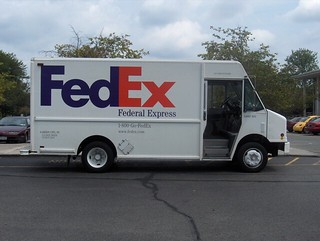Dimensional Weight Pricing Disrupts the Delivery Industry
We've talked before about maintaining an efficient, cost-effective supply chain by reviewing industry shifts, variable costs. and eliminating waste.
Well, one such sea change may soon occur for shippers large and small, as FedEx moves forward with a waste elimination measure of its own.
The Shift to Dimension Based Shipment Pricing

The new Fed Ex pricing model is intended to cut costs that arise from light but bulky packages. Often these are everyday, low price items like toilet paper and kitchen roll, which take up more than their fair share of space on the delivery vehicle.
Essentially the announcement means that FedEx will now calculate shipping rates by size, should the dimensional weight of such packages be greater than their actual weight. There are clear implications for online retailers if the move goes industry-wide, as the likes of Amazon and Walmart rely upon the current price model in order to offer free shipping to consumers.
These companies are making great strides towards same-day delivery thanks to this growth, but dimensional weight pricing poses a threat to some items on its shopping list.
This pricing will take effect on January 1st, 2015. This means there is still some time to plan and adjust for additional costs, perhaps even switching services if other providers choose to compete with FedEx on this criteria.
FedEx Freight is also bumping up its fuel surcharge by 3% from June 2nd, 2014. Although fuel costs are a more recognized variable cost for shippers (and all of us, for that matter), this extra hike combined with the dimensional pricing announcement will prompt shipping teams around the U.S. to pull out their calculators.
Analyze and Adjust Your Shipping Options

The potential for this shift to reverberate around the supply chain means that every organization should review the likely impact on shipping costs.
Even if FedEx isn't your chosen provider, it's worth undertaking this analysis now to understand how wider adoption would affect your business.
Firstly, look at the immediate impact of these price changes on your monthly costs. As things run currently, how much extra can you expect to pay? Although the adjustments won't be implemented by FedEx until next year, you'll need to quantify the additional costs now in order to put a plan in place.
Longer term, for example, it may be possible to trim costs or alter packaging to make dimensional weight pricing more palatable. As this could be an extensive process, the more time you can give your team to review and take action, the better. The news may in fact be an ideal opportunity to review your wider order fulfillment process and weed out other unnecessary costs.
Depending on the size and scope of your logistics partners, you may also be able to negotiate preferential rates or some discount to offset the upcoming increase. Whatever the outcome of your review, understanding your options at this advance point is a much better option than running around at the last minute, during the busy holiday season.
